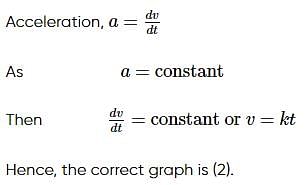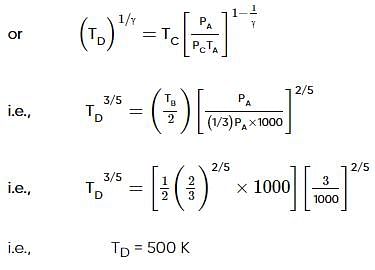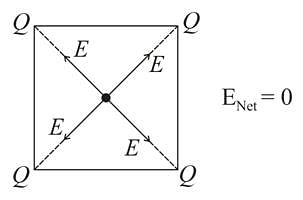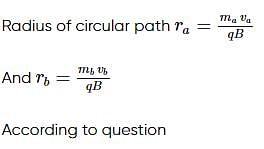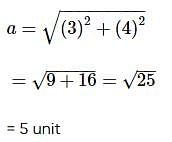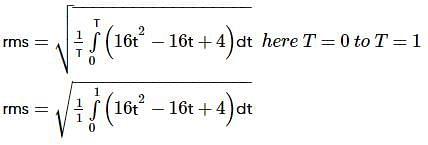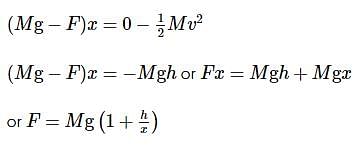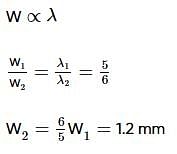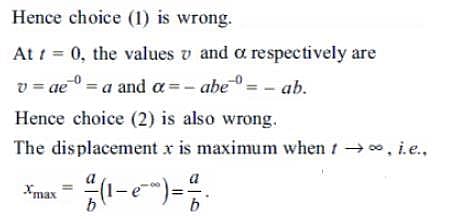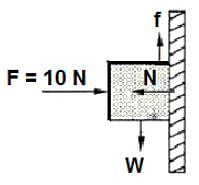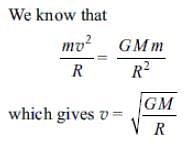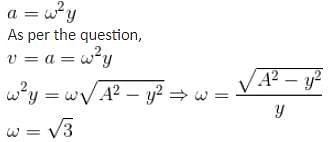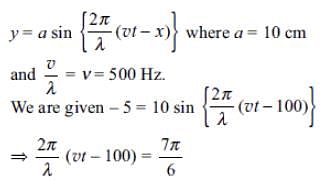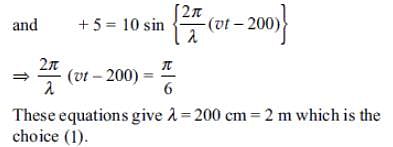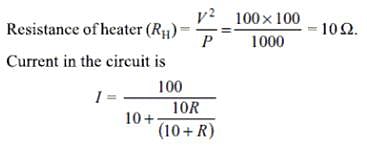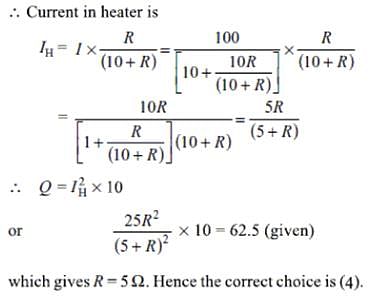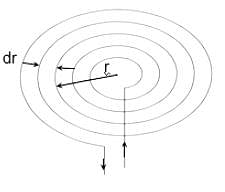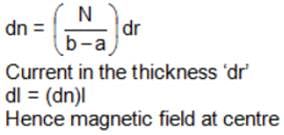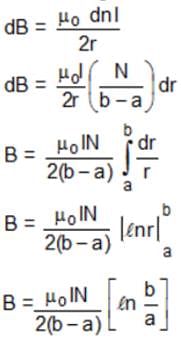BITSAT Practice Test - 15 - JEE MCQ
30 Questions MCQ Test - BITSAT Practice Test - 15
A body starts from rest and moves with uniform acceleration. Which of the following graphs represents it motion?
One mole of a monatomic ideal gas is taken through the cycle shown in diagram
A → B adiabatic expansion
B → C cooling at constant volume
C → D adiabatic compression
D → A heating at constant volume
The pressure and temperature at A, B, etc., are denoted by PA, TA; PB, TB, etc., respectively.
Given TA = 1000 K, PB = (2/3) PA and PC = (1/3) PA.
Calculate the work done by the gas in the process A → B, the heat lost by the gas in the process B → C and temperature TD.
Given (2/3)2/5 = 0.85 and R = 8.31 J/mol K.
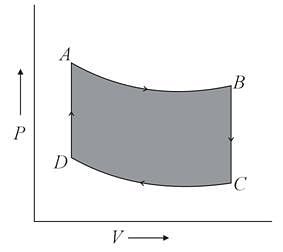
A → B adiabatic expansion
B → C cooling at constant volume
C → D adiabatic compression
D → A heating at constant volume
The pressure and temperature at A, B, etc., are denoted by PA, TA; PB, TB, etc., respectively.
Given TA = 1000 K, PB = (2/3) PA and PC = (1/3) PA.
Calculate the work done by the gas in the process A → B, the heat lost by the gas in the process B → C and temperature TD.
Given (2/3)2/5 = 0.85 and R = 8.31 J/mol K.

| 1 Crore+ students have signed up on EduRev. Have you? Download the App |
Four point positive charges of same magnitude(Q) are placed at the corners of a square. The electric field at the center of the square of side 'a' is :
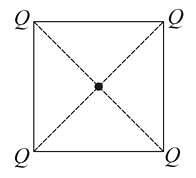

Two particles of masses ma and mb and and same charge are projected in a perpendicular magnetic field. They travel along circular paths of radius ra and rb and such that ra > rb. Then which is true?
Two progressive waves having equation x1=3 sin ωt sin and x2=4 sin (ωt + 90o) are super imposed. The amplitude of the resultant wave is :
Spot the wrong statement:
The acceleration due to gravity g decreases if,
A machine gun fires six bullets per second into a target. The mass of each bullet is 3 g and the speed 500 m s−1. The power delivered to the bullets is
A hollow cylinder of radius R and height h (<< R) is completely filled with a liquid having coefficient of viscosity η. Now a cylinder of radius R is placed over it and is rotated with constant angular velocity ω by an external agent as shown.
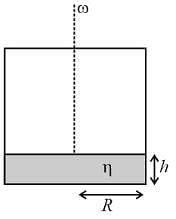
The wavelength of characteristic X-rays Kα line emitted by hydrogen like atom is 0.32 Å. The wavelength of Kβ line emitted by the same element is
Find the rms value of the saw tooth wave form shown in figure -
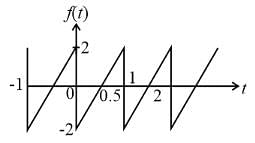
Assertion: string can never remain horizontal, when loaded at the middle, howsoever large the tension may be.
Reason: For horizontal string, angle with vertical, 
Two circular coils mounted parallel to each other on the same axis carry steady currents. If an observer between the coils reports that one coil is carrying a clockwise current i, while the other is carrying a counter clockwise current i, between the two coils, then there is
A body of mass M is dropped from a height h on a sand floor. If the body penetrates x cm into the sand, the average resistance offered by the sand to the body is
Which of the following device works on the principle that the charge between the two flow if they are connected by a conducting wire:
In a certain double slit experimental arrangement, interference fringes of width 1.0 mm each are observed when light of wavelength 5000 Å is used. Keeping the set-up unaltered if the source is replaced by another wavelength of 6000 Å, the fringe width will be -
The displacement x of a particle varies with time according to the relation  Then,
Then,
A horizontal force of 10 N is necessary to hold a stationary block against a wall. The coefficient of friction between the block and the wall is 0.2. The weight of the block is

Two blocks of masses m and M are placed on a horizontal frictionless table connected by a spring as shown in the figure. The block of mass M is pulled to the right with a force F. If the acceleration of the block of mass m is 'a', then the acceleration of the block of mass M will be

A smooth sphere 'A' is moving on a frictionless horizontal surface with angular speed ω and centre of mass velocity v. It collides elastically and head-on with an identical sphere B at rest. Neglect friction everywhere. After the collision, their angular speeds are ωA and ωB, respectively. Then,
The angular momentum of the Earth revolving around the Sun is proportional to Rn, where R is the distance between the Earth and the Sun. The value of n is
Directions: The question below is based on the following passage:
Two light springs of force constants k1 = 1.8 Nm-1 and k2 = 3.2 Nm-1 and a block of mass m = 200 g are arranged on a horizontal frictionless table as shown in the figure. One end of each spring is fixed on rigid supports and the other end is free. The distance CD between the free ends of the springs is 60 cm and the block moves with a velocity 'v' = 120 cms-1 between the springs.
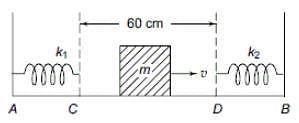
When the block moves towards the spring k2, the time taken by it to move from D up to the maximum compression of spring k2 is (in seconds)
A particle executes SHM on a linear path with an amplitude of 2 cm. When the displacement is 1 cm, the magnitude of its velocity is equal to that of its acceleration. The frequency of the oscillations is
Transverse wave of amplitude 10 cm is generated at one end (x = 0) of a long string by a tuning fork of frequency 500 Hz. At a certain instant of time, the displacement of a particle A at x = 100 cm is -5 cm and of particle B at x = 200 cm is +5 cm. What is the wavelength of the wave?
The figure below shows the P-V diagram for a fixed mass of an ideal gas undergoing cyclic process ABCA. AB represents an isothermal process.
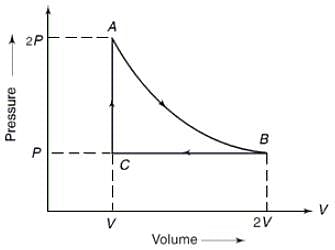
Which of the following graphs represents the P-T diagram of the cyclic process?
A heater is designed to operate with a power of 1000 W in a 100 V line. It is connected in combination with a resistance of 10 Ω and a resistance R to a 100 V line as shown in the figure. What should be the value of R so that the heater operates with a power of 62.5 W?

A coil having N turns is wound tightly in the form of a spiral, with inner and outer radii a and b, respectively. When a current I passes through the coil, the magnetic field at the centre is
A rectangular loop carrying a current i is situated near a long straight wire such that the wire is parallel to one of the sides of the loop. If a steady current is established in the wire, as shown in the figure, the loop will
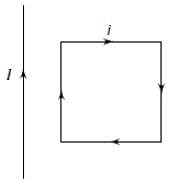
A transformer has 200 windings in the primary and 400 windings in the secondary. The primary is connected to an AC supply of 110 V and a current of 10 A flows in it. The voltage across the secondary and the current in it respectively are
A point object is placed at a distance of 12 cm on the axis of a convex lens of focal length 10 cm. On the other side of the lens, a convex mirror is placed at a distance of 10 cm from the lens such that the image formed by the combination coincides with the object itself. What is the focal length of the convex mirror?
A radioactive sample S1 having an activity of 5 μCi has twice the number of nuclei as another sample S2, which has an activity of 10μCi The half lives of S1 and S2 can be


